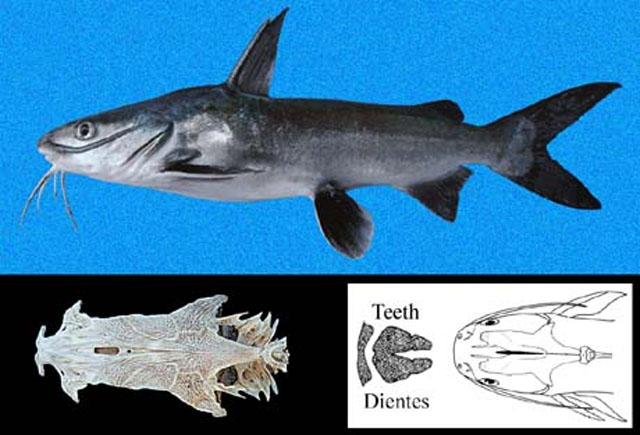| Ariidae (Sea catfishes), subfamily: Ariinae |
| 50 cm TL (male/unsexed) |
|
demersal; brackish; marine; depth range 6 - 107 m |
| Eastern Pacific: México to Perú. |
|
Diagnosis: This species is distinguished by the following characters: anterior cavities of lateral ethmoids (where the olfactory bulb is housed) greatly developed; bony excrescence of posterolateral process of lateral ethmoids prominent, completely closing the lateral fenestrae; basioccipital with a laminar bony crest bordering the anterior foramen of aortic tunnel (Ref. 86580).
Description: Body elongated and robust; mouth sub-terminal, with fleshy lips; eyes large (4.5 to 6.5 times in head length); cephalic plate strongly granulated, extending over the eyes; lower branch of the first gill arch with 9 to 10 gill rakers; body from blue-black to olive-brown, sometimes with blue, green or violent iridescence; dorsal surface of the paired fins and distal region of the anal fin occasionally black; edge of anal fin white; maxillary barbels black (Ref. 55763). |
| Abundant on the continental shelf (Ref. 9271). Utilized fresh or salted, but rarely consumed (Ref. 9271). Demersal species that inhabits sandy substrates in coastal waters up to 60m deep. May be caught in nets and purse seines along with other fishes. It is sold fresh (Ref. 55763). |
|
Least Concern (LC); Date assessed: 23 May 2007 Ref. (130435)
|
| traumatogenic |
Source and more info: www.fishbase.org. For personal, classroom, and other internal use only. Not for publication.

